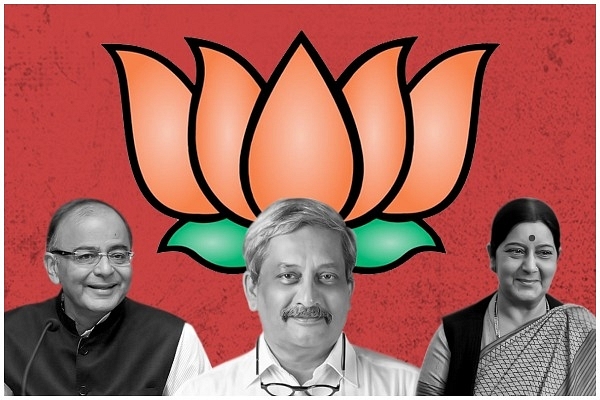
Despite Loss Of Three Big Names This Year, BJP’s Leadership Pipeline Is Strong
The interesting thing about the BJP’s basket of future leaders at the Centre is that it is able to throw up so many alternatives even after losing three top leaders.
The death of three Bharatiya Janata Party (BJP) stalwarts – Manohar Parrikar, Sushma Swaraj and Arun Jaitley – within months of each other leaves a huge gap in the pipeline of future top leaders for the party.
All three were in their sixties, and hence potential aspirants to the top job, if bad health had not ruled them out prematurely.
With Narendra Modi at 69, the logical 60-something leaders who could step in if there is a need add up to three: Rajnath Singh (68), Nitin Gadkari (62), and Shivraj Singh Chouhan (60). Who finds favour with the party and Rashtriya Swayamsevak Sangh leadership depends on the political realities of the future when the need may arise. All three would be acceptable in case the BJP needs to lead a coalition without a majority of its own.
After that, the next few leaders of note all fall in the late 40s or mid-50s age range. Amit Shah (55), now reckoned to be the logical successor to Modi after his stellar performance as Home Minister over the last three months, is clearly the best placed among the rest. And after Shah, there are Yogi Adityanath (47) and Devendra Fadnavis (49).
The interesting thing about the BJP’s basket of future leaders at the Centre is that it is able to throw up so many alternatives even after losing three top leaders in one year – not to speak of a fourth in Ananth Kumar, who passed away in November 2018 at age 59.
Whether at the Centre or states, the party has been able to find enough talent to replace ageing or departed leaders rather quickly.
After 2014, for example, the BJP has managed to throw up winners in M L Khattar in Haryana, Fadnavis in Maharashtra, Raghubar Das in Jharkhand, Trivendra Singh Rawat in Uttarakhand, Sarbananda Sonowal and Himanta Biswa Sarma in Assam and Biplab Kumar Deb in Tripura.
The existence of towering leaders like Modi and Shah (both from Gujarat) and B S Yediyurappa in Karnataka has prevented the rise of a second line in these two states, but presumably, when and if the need arises, the party will find worthy successors.
In the next few years, the party needs to find leaders in Andhra Pradesh and Telangana, as also Kerala and Tamil Nadu, where it is still very weak. The leadership challenge for the BJP is mainly in the south, and less so in the north or west.
In the east, the big challenge is in West Bengal and Bihar. In West Bengal, the political tailwind is in the BJP’s favour, but the party lacks a real face to challenge Mamata Banerjee in the state assembly elections due in 2021. In Bihar, Sushil Kumar Modi seems to make a good No 2 to Nitish Kumar, but if the BJP had to make a go for power on its own, it is far from certain that Sushil Modi will be No 1. There is a weak pipeline of top leaders in the BJP in Bihar.